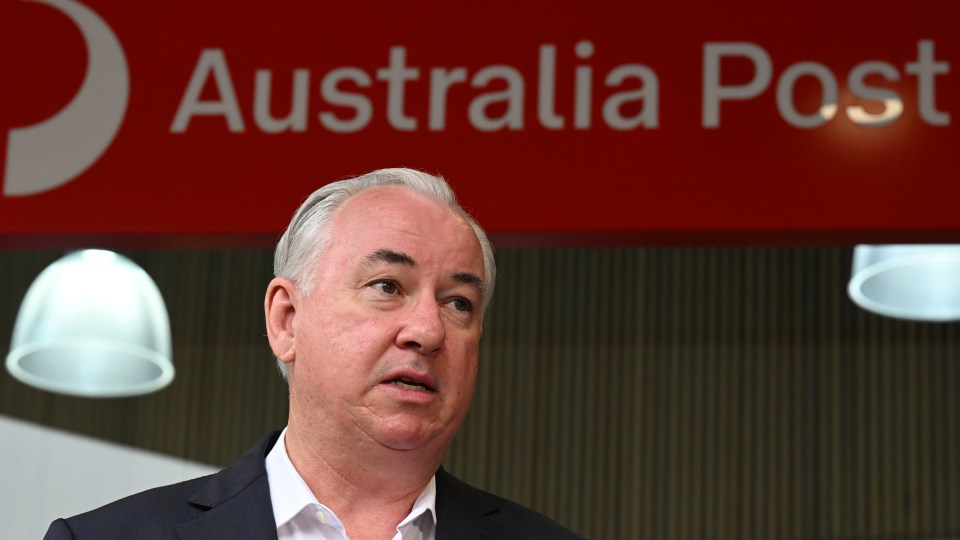


Taxpayer-owned Australia Post has racked up another year of losses, but its leadership team has nevertheless walked away with bonuses worth hundreds of thousands of dollars.
The annual report this week revealed chief executive Paul Graham will earn $2.68 million in 2024 – $965,000 of which is attributed to short-term incentives (bonuses).
The postie’s other executives, including chief financial officer Michael Bradburn, will receive between $226,000 and $531,000 in bonuses in addition to their base salaries.
It comes despite Australia Post making a $88.5 million loss last financial year, which followed a $244 million loss in the prior financial year as the company endures structural change.
Earlier this year Graham warned that an overhaul of the company was needed to allow it to compete and turn profits in a world where e-commerce deliveries now dwarf traditional mail.
Letter volumes have plunged 66 per cent since 2008, though Australia Post is still required by law to deliver all mail to Australian addresses, adding significant cost to its business model.
The Albanese government in July unveiled plans to modernise the business, scaling back the frequency of deliveries and staving off regional post office closures.
Australia Post bonuses
Are these types of bonuses at Australia Post normal? And are they appropriate?
UNSW associate professor Mark Humphery-Jenner said corporate bonuses are relatively common at Australia Post and were present in 2022 and 2023.
In fact, the quantum of total bonus payouts has fallen significantly in recent years, down from a total of $70.6 million in 2022 to $18 million in 2024, according to Australia Post’s annual report.
“The underlying issues are: How should salaries work when companies make a loss?And what is appropriate remuneration? A related issue is what exactly is a ‘bonus’?” Humphery-Jenner said.
Humphrey-Jenner went on to explain that a loss-making company needs to consider whether it would have been better off with or without its chief executive when answering those questions.
“For example, suppose Australia Post were to lose $200 million (as it lost in 2023), but the CEO and team reduced the loss to $89 million, that’s a win,” he said.
“If it reflects leadership, then that is an improvement of $111 million. Furthermore, if there are no bonuses for good performance in loss-making companies, you would not get CEOs to work on turning around organisations.”
Incentives important
Humphery-Jenner said that Graham’s $2.6 million salary in 2024 is “well outside” the top 50 highest-paid CEOs in Australia, meaning that in theory he could argue for higher pay.
There is a separate issue around fairness, however, with Australia Post ultimately being owned by taxpayers, who are ultimately the ones bearing the company’s financial losses.
Humphery-Jenner said that incentivising the executive team to turn around the company is important.
“It’s neither here nor there that is is a government organisation,” he said.
“Government organisations need to run like the private sector in this respect. If you pay peanuts you get monkeys.
“It is correct to benchmark the AusPost CEO’s salary to the private sector, obviously with private sector demands being placed on them.”










